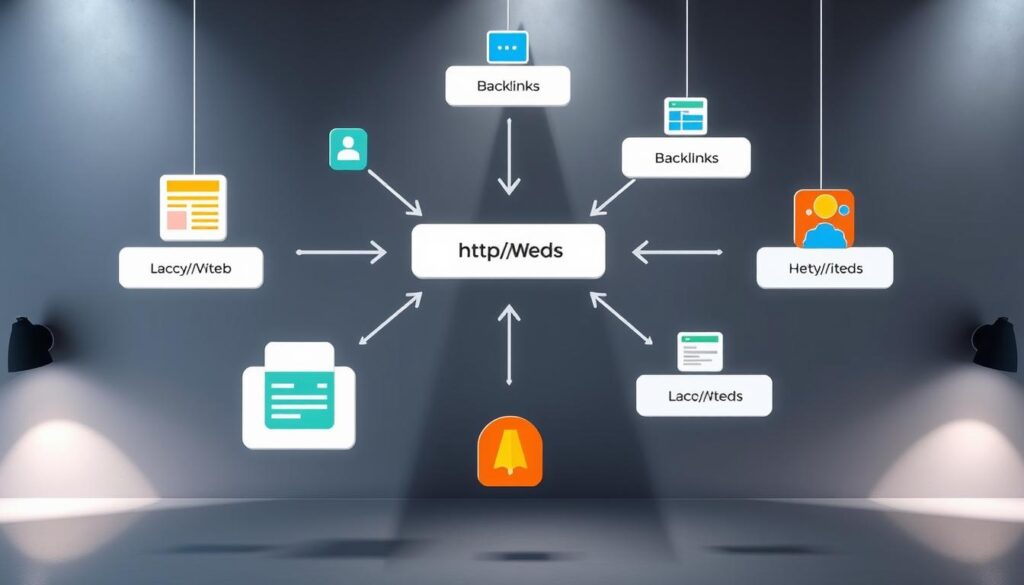Growing your online presence starts with understanding what makes search engines prioritize certain pages. Unlike paid ads, organic visibility rewards those who build lasting value for visitors. This approach helps your website attract genuine interest while reducing reliance on temporary campaigns.
Automated crawlers scan the web daily, indexing pages based on structure, relevance, and user experience. Tools like XML sitemaps act as roadmaps, guiding these bots to your most important content. While there’s no shortcut to overnight success, aligning with technical best practices creates a strong foundation.
Quality matters just as much as quantity. Pages that answer real questions or solve problems tend to earn better rankings. Think of your site as a library—every article should serve a clear purpose and keep readers engaged. Search algorithms increasingly prioritize this human-first approach.
This guide breaks down actionable strategies to help your website stand out. You’ll learn how to optimize technical elements, craft compelling content, and track progress effectively. Let’s dive in!
Key Takeaways
- Organic growth through SEO builds sustainable visibility compared to paid ads.
- Search engines use automated crawlers to index and rank pages based on relevance.
- Technical optimizations like sitemaps improve how bots interact with your site.
- High-quality content addressing real user needs drives long-term success.
- Consistent updates and tracking are essential for measurable improvements.
Understanding SEO Fundamentals and User Search Intent
At its core, SEO bridges the gap between what people seek and the answers your site provides. Imagine someone typing a question into Google—your content’s ability to match their intent determines whether they’ll click your link or scroll past. This alignment shapes rankings and drives meaningful connections.
Defining Key SEO Concepts
Keywords are phrases users type when looking for solutions. Meta tags describe your page’s purpose to crawlers, while descriptive URLs help both visitors and algorithms understand your structure. For example, a URL like “/best-coffee-shops-chicago” clearly signals the page’s focus.
Importance of Search Engine User Behavior
When someone spends time reading your article or clicks multiple links, search engines interpret this as satisfaction. Pages that fail to engage often drop in results. A study by Backlinko found content addressing specific questions ranks 2x faster than generic posts.
Structuring content around user needs isn’t optional. If someone searches “how to fix a leaky faucet,” they want step-by-step guidance—not a history of plumbing. Matching this intent with clear headings and actionable tips keeps visitors engaged and algorithms impressed.
How Can SEO Increase Web Traffic
Successful online strategies start by decoding what your audience truly wants. Think of keyword research as a translator—it turns vague ideas into phrases people actually type. Tools like Google Keyword Planner reveal terms your business should prioritize, from “budget-friendly laptops” to “organic skincare routines.”

Keyword Research and Content Strategy
Tailored keyword lists act as blueprints for creating useful material. For example, a pet store might target “best hypoallergenic dog food” instead of generic terms. This approach connects specific searches to your pages, boosting relevance and engagement.
| Keyword Type | Business Goal | Outcome |
|---|---|---|
| Long-tail phrases | Attract niche audiences | Higher conversion rates |
| Localized terms | Boost regional visibility | Increased foot traffic |
| Question-based | Address user concerns | Longer page visits |
Aligning Search Intent with Content Creation
Matching content to search intent means delivering exactly what visitors need. A bakery’s blog post titled “10 Gluten-Free Desserts for Parties” answers cravings while showcasing products. This optimization builds trust and encourages repeat visits.
Regularly updating articles keeps them fresh for both readers and algorithms. One study showed pages revised quarterly gain 25% more visibility than static ones. Pair evergreen topics with trending insights to balance immediate and lasting value.
Crafting High-Quality, Engaging Content
Effective digital strategies hinge on material that answers questions while meeting algorithmic standards. Visitors crave clear solutions, while search engines reward thoroughness and originality. This balance transforms casual readers into loyal followers.
Writing for Both Audiences
Natural language keeps readers engaged, but strategic keywords help algorithms categorize your work. Place terms like “beginner gardening tips” in headings and first paragraphs without disrupting flow. Tools like Hemingway Editor highlight complex sentences needing simplification.
Consider this comparison of content refresh strategies:
| Update Type | Frequency | Impact |
|---|---|---|
| Fact-Checking | Monthly | Boosts accuracy |
| Statistics Refresh | Quarterly | Enhances relevance |
| Visual Refresh | Biannual | Improves engagement |
Keeping Content Fresh and Original
Outdated articles harm credibility. A 2023 HubSpot study found updated pages receive 37% more shares than untouched ones. Schedule quarterly reviews to add new examples or replace expired data.
Unique perspectives prevent duplication issues. Instead of rewriting existing guides, interview experts or share case studies. This approach strengthens authority and helps your material stand out in search results.
Clear structure matters. Break long guides into numbered steps with bold subheadings. Visitors appreciate skimmable formats, while crawlers better understand organized pages.
Optimizing Website Structure and Navigation
A well-organized site acts like a helpful guide, directing visitors and search engines to key pages effortlessly. Clear pathways ensure content gets indexed properly while keeping users engaged longer.
Creating Descriptive URLs and Breadcrumbs
Simple, readable URLs like “/fresh-smoothie-recipes” tell both visitors and algorithms what to expect. Avoid messy strings of numbers or symbols—clarity builds trust. Breadcrumbs like Home > Recipes > Breakfast let users backtrack easily, reducing bounce rates by 15% according to recent case studies.
For blogs, categorize posts with tags like “Seasonal Ingredients” or “Quick Meals.” This creates natural internal links that boost page authority. A cooking site using this method saw a 22% rise in returning visitors within three months.
Enhancing Overall User Experience
Streamlined navigation keeps people exploring. Compare these approaches:
| Navigation Type | Benefit | Example |
|---|---|---|
| Hierarchical Menus | Simplifies complex sites | Furniture store sorting by room type |
| Localized Search Bars | Speeds up discovery | Bookstore filtering by genre |
| Visual Thumbnails | Boosts engagement | Travel site showcasing destinations |
Optimize titles and meta descriptions to align with page content. A gardening site using descriptive headers saw a 30% drop in exit rates. Regular audits identify broken links or outdated categories, ensuring smooth journeys for every visitor.
Implementing Technical SEO for Faster Loading
Speed shapes user satisfaction as much as content quality. Pages loading in under two seconds keep visitors engaged, while sluggish sites drive 40% away permanently. Technical tweaks transform clunky platforms into sleek, high-performing assets.

Mobile Optimization Best Practices
Over 60% of searches happen on phones. Responsive design ensures your marketing materials adapt seamlessly across screens. Prioritize touch-friendly buttons and compressed images to reduce load times. Google’s Mobile-Friendly Test identifies issues like oversized media files or cramped text layouts.
Accelerated Mobile Pages (AMP) streamline content delivery. News sites using AMP report 35% longer session durations. Combine this with lazy loading for images—elements load only when visible, preserving bandwidth.
Utilizing Schema Markup and Optimized Alt Text
Schema markup acts as a translator for search bots. Adding recipe schemas, for example, helps engines display cooking times or calorie counts directly in results. Tools like Schema.org provide ready-to-use code snippets for various niches.
Alt text isn’t just for accessibility. Phrases like “barista pouring latte art” help media rank in image searches while clarifying context. Pair descriptive filenames (e.g., “organic-coffee-beans.jpg”) with compressed formats like WebP for faster rendering.
Regular audits using Lighthouse or Screaming Frog uncover hidden bottlenecks. One e-commerce brand boosted conversions by 18% after fixing broken image links and optimizing product schemas. Track progress monthly to maintain peak performance.
Leveraging On-Page SEO Elements
The digital doorway to your content begins with titles and descriptions that spark curiosity. These elements act as virtual handshakes—welcoming visitors while signaling relevance to search algorithms. Crafting them thoughtfully ensures your pages stand out in crowded results.
Balancing Clarity and Curiosity
Page titles should summarize the topic while leaving room for intrigue. For example, “5 Budget-Friendly Meal Prep Hacks” outperforms vague alternatives. Meta descriptions need actionable language, like “Discover time-saving strategies” instead of generic summaries.
Natural keyword placement matters. Tools like SurferSEO analyze top-ranking pages to suggest optimal density. Aim to include primary terms in the first 100 words and headings without disrupting flow. This satisfies both readers and indexing bots.
| Optimization Tool | Key Feature | Best For |
|---|---|---|
| SEMrush | Title tag grader | Competitor analysis |
| Yoast SEO | Readability checks | WordPress users |
| Moz Pro | Meta snippet previews | Local businesses |
Internal links strengthen site authority when anchored to descriptive text. Instead of “click here,” use phrases like “explore vegetarian dinner ideas.” This clarifies the link’s purpose and distributes ranking power across related pages.
Regular testing refines results. A/B test meta elements using Google Search Console to see which versions drive more clicks. Small tweaks often yield significant visibility boosts over time.
Developing a Strategic Link Building Plan
Building a network of valuable connections strengthens your site’s authority and visibility. Internal links guide visitors to related topics, while external endorsements from trusted sites signal credibility to Google Search algorithms. Both strategies work together to boost your ranking potential.
Internal Linking for Better Navigation
Thoughtful internal links act like signposts, directing users to helpful resources. For example, linking “beginner gardening tools” to a detailed buying guide keeps visitors engaged. This practice also spreads ranking power across pages, making your entire site more competitive.

Prioritize context over quantity. Anchor text like “seasonal recipe ideas” performs better than generic phrases. A 2023 Ahrefs study found sites with structured internal linking saw 29% longer session durations.
| Internal Link Type | Use Case | Impact |
|---|---|---|
| Contextual | Supporting blog posts | +18% page views |
| Navigational | Product categories | −12% bounce rate |
| Footer | Legal/contact pages | Improved crawl efficiency |
Securing Quality Backlinks Through Guest Posting
Guest contributions on reputable sites establish your expertise while generating quality referrals. Focus on platforms that align with your niche—a fintech startup might target finance podcasts or industry newsletters.
Niche edits (adding links to existing articles) offer another pathway. Tools like Google Search Console help identify high-performing content where your insights could add value. Always prioritize relevance over domain authority metrics.
| Outreach Strategy | Success Rate | Time Investment |
|---|---|---|
| Cold email pitching | 8-12% | High |
| Social media networking | 19-23% | Medium |
| Existing partnerships | 34-40% | Low |
Monitor backlink profiles regularly. Remove toxic links using disavow tools, and track ranking changes after acquiring new referrals. Sites maintaining clean link portfolios often see sustained improvements in Google Search visibility.
Utilizing Multimedia and Social Media for Broader Reach
Visual storytelling transforms passive viewers into engaged visitors. High-quality images, videos, and infographics make complex ideas digestible while keeping audiences hooked. A study by Venngage found articles with visuals receive 94% more views than text-only posts.
Image Optimization and Alt Text Guidelines
Optimized visuals work harder for your strategy. Always make sure filenames describe the content—like “homemade-pizza-recipe.jpg” instead of “IMG_1234.” Alt text should clarify visuals for screen readers while including relevant keywords. For example:
“Alt text: Step-by-step guide to pruning rose bushes in springtime.”
Compress files to balance quality and speed. Tools like TinyPNG reduce image sizes by up to 70% without noticeable loss. Check Google Search Console for crawl errors related to oversized media.
| Format | Best Use | Avg. Load Time |
|---|---|---|
| WebP | Photographs | 0.8s |
| PNG | Graphics/Logos | 1.2s |
| SVG | Icons/Animations | 0.4s |
Social platforms amplify reach when used strategically. Share infographics on Pinterest or Instagram Stories showcasing product tutorials. Repurpose blog content into YouTube shorts—videos under 60 seconds get shared 2x more often.
Schedule posts during peak engagement times. Analytics show weekdays between 10 AM–12 PM EST drive 28% higher click-through rates. Pair evergreen content with trending hashtags to stay visible in fast-moving feeds.
Conclusion
Building a sustainable online presence requires blending strategy with adaptability. Combining technical optimizations, audience-focused content, and trustworthy connections forms the backbone of successful digital growth. Platforms evolve, and so should your approach—regular audits and updates keep websites relevant in shifting rankings.
Leverage analytical tools to monitor performance shifts and identify opportunities. These resources provide actionable information, helping refine tactics for better visibility. Tools like Google Analytics reveal what resonates with your audience, enabling smarter decisions across websites.
Ready to elevate your web platform? Start by auditing one key area this week, whether improving internal links or refreshing outdated articles. Lasting results stem from quality information and persistent effort. Stay curious, stay proactive, and watch your digital footprint expand.
